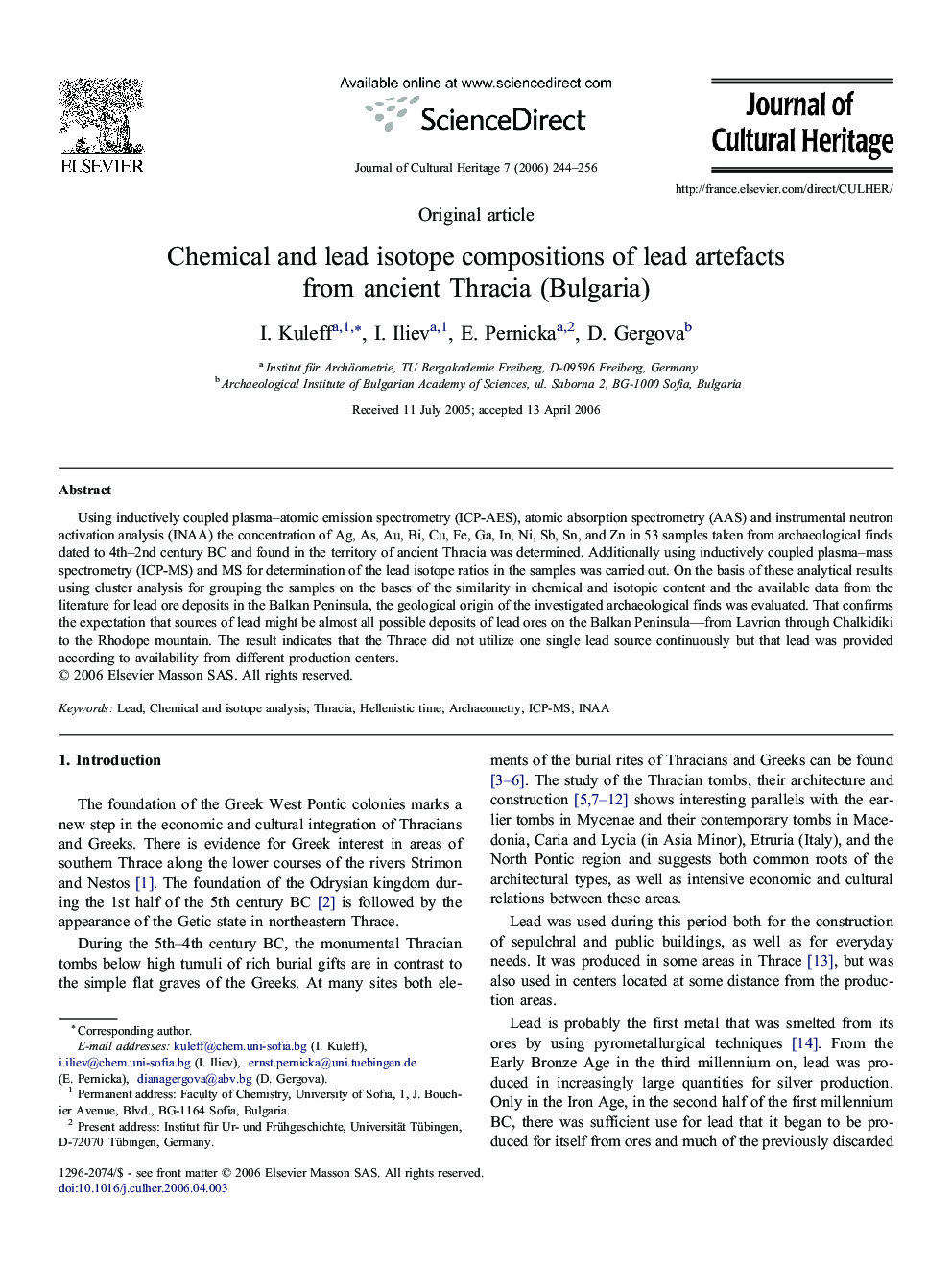| Article ID | Journal | Published Year | Pages | File Type |
|---|---|---|---|---|
| 1038751 | Journal of Cultural Heritage | 2006 | 13 Pages |
Using inductively coupled plasma–atomic emission spectrometry (ICP-AES), atomic absorption spectrometry (AAS) and instrumental neutron activation analysis (INAA) the concentration of Ag, As, Au, Bi, Cu, Fe, Ga, In, Ni, Sb, Sn, and Zn in 53 samples taken from archaeological finds dated to 4th–2nd century BC and found in the territory of ancient Thracia was determined. Additionally using inductively coupled plasma–mass spectrometry (ICP-MS) and MS for determination of the lead isotope ratios in the samples was carried out. On the basis of these analytical results using cluster analysis for grouping the samples on the bases of the similarity in chemical and isotopic content and the available data from the literature for lead ore deposits in the Balkan Peninsula, the geological origin of the investigated archaeological finds was evaluated. That confirms the expectation that sources of lead might be almost all possible deposits of lead ores on the Balkan Peninsula—from Lavrion through Chalkidiki to the Rhodope mountain. The result indicates that the Thrace did not utilize one single lead source continuously but that lead was provided according to availability from different production centers.
